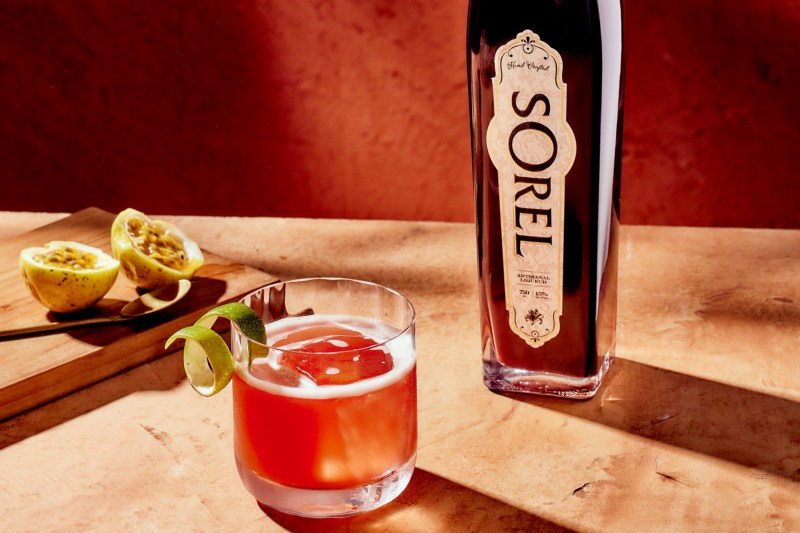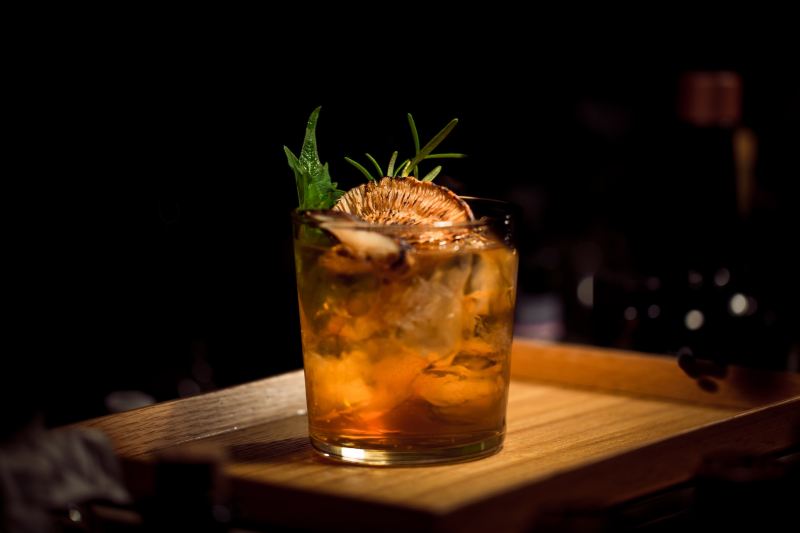
When you list off the most important parts of making a good cocktail your mind likely goes immediately to good ingredients: quality spirits, freshly squeezed citrus juices, and well-matched mixers. You might also consider the importance of using the right tools, like getting a proper mixing glass so your stirred drinks can be properly incorporated, or a good strainer so that there aren’t little shards of ice in your cocktails. And then there are the fun additions like elaborate garnishes, bitters, or home-made syrups which can add a personal touch to your drinks.
All of those things are important, absolutely. However I think there’s one ingredient that can make or break a good cocktail, and it’s something many drinkers don’t ever stop to consider. It’s the humble but vital ingredient of ice.
Why ice is so important
In mixed drinks like a gin and tonic or a screwdriver, ice is added to the drink primarily to chill it down to a pleasing temperature. That’s a topic we’ll come back to. But in cocktails which are shaken or stirred, ice is far more important than that. Cocktails are typically composed of between around 20 to 30 percent water, and this water comes from the ice used in the preparation process.
When you stir ingredients in a mixing glass or shake them in a shaker with ice, you are chipping away small pieces of the ice so that it dissolves and blends with your other ingredients. You might imagine that water doesn’t make much of a difference to taste, being tasteless itself. But it’s vital in opening up the flavors of other ingredients. That’s why many whiskey drinkers like to add a dash of water to their whiskey when they drink it neat.
If you’re ever in doubt of how important water is to cocktails, it’s worth trying to make a drink with no ice. Even if you mix up the ideal ratios for a drink that you love and put it into the freezer so that it gets to the chilled temperature that you usually enjoy it at, if you sip it you’ll find that your drink tastes harsh, unbalanced, and incomplete. Even for special room temperature cocktails like those designed to be drunk from a flask, you’ll generally find water being added at a rate of around 30%.
When you make your cocktails you should be sure to stir for a long time – around 30 seconds is a good start – or to shake for a good while too – I typically do around 12 to 15 seconds – in order to melt enough ice to get plenty of water into your cocktail. Despite what you might imagine, this won’t make the cocktail taste watery but will rather make the flavors stand out more as well as often improving the mouthfeel of the drink. A good rule of thumb is to mix or shake until the vessel is cold to the touch. That means your ingredients are sufficiently incorporated with the ice.
How to make good ice

Given how important ice is to a drink, it should be obvious that the ice itself needs to be good quality. That can sound kind of silly – if it’s just frozen water, how can it be good or bad? – but just like not all tap water tastes the same, not all ice tastes the same either.
For a start, ice to avoid in your cocktails is the typical bagged ice you get from the store for parties. This will work just fine for throwing in a bathtub to chill your bottles, but it frequently has a plasticy off-taste that will sneak into your drinks as well if you use it for mixing. The same is true of ice from fridge door ice makers. The tubing which carries water to your fridge door can build up reside over time (and let’s be honest, who ever actually cleans these things?) so the ice cubes will often have a funky taste too.
The best ice to use in my experience is regular old tap water that you pour into an ice tray and put into your freezer. However, you do need to be using fresh ice. I know, I know, that sounds stupid as well, but ice will pick up scents and flavors from other items in your freezer over time. If your ice cubes have been sitting next to a loaf of frozen bread for two weeks, they are going to pick up a bready flavor and that flavor is going to make its way into your drinks. Old ice can ruin an otherwise perfectly crafted drink, so if you’re going to go to the effort of mixing your own beautiful cocktails then you might as well ensure you have fresh ice to go in them.
Fortunately, making ice is dead easy and requires basically no effort, just a little forethought. If you’re planning a cocktail evening, then put ice trays into your freezer the day before. That’s plenty of time for the water to freeze without picking up any extra flavors. Ice that’s a few days old is fine too, but try to avoid anything that’s more than a week old. Also, some people like to fill their ice trays with water, then leave them out on the side for a day to let them get rid of any volatile chemicals before they go into the freezer. I’ve never found that necessary but if you find the taste of your tap water unpleasant it may be worth a try.
Another tip to remember if you’re having friends round and you want to make cocktails for everyone is that no matter how much ice you think you’ll need, you’re going to need more than that. Ice seems to just get eaten up whenever there is a cocktail party going on. So you can always make plenty ice ahead of time by using your ice trays, then turning out the ice into tupperware once it’s frozen and then refilling the ice trays again. You can do this as many times as you need until your freezer is busting with ice, and then you won’t have to give it a second thought while you’re making your drinks.
What size ice to use

A big factor in the successful use of ice is its size. Typical ice trays will make cubes which are small, at under 1” across, or in funny shapes. The problem with these smaller size cubes is that while they are okay for stirring or shaking with, they aren’t good for chilling your mixed drinks. When you make a gin & tonic, for example, you add ice in order to cool the drink. You don’t want to add any extra water – that dilution is already achieved through the tonic water. That’s the case for most mixers, which have the required water already incorporated into them. If you make a mixed drink and add small size ice cubes, they will melt too quickly and make you drink taste watery before you have the chance to finish it.
You don’t want to skip the cooling, however. Drinks which are pleasantly cool are more enjoyable to drink and more refreshing, so you still want to use ice here. You just want to make sure you’re using large format ice cubes. You can now easily get hold of larger ice trays which make 2” cubes, which are perfect for mixed
Get a large size ice cube tray and you can use the bigger cubes for your mixed drinks. They’ll work just fine for your stirred or shaken cocktails too, just remember that you might need to agitate for a little longer than usual as the ice will melt more slowly. Decent quality ice trays will be made of silicone so it’s easy to pop the ice cubes out once they’re ready, which is especially important when the cubes are larger. And don’t forget to wash out your trays thoroughly once you’ve taken the ice out and give them an occasional rinse using a vinegar solution to keep them clean and avoid getting any stray off flavors in your ice.

Another option is to use chilling stones, which are solid blocks that can be placed in the freezer and then added to drinks to lower their temperature without adding any water at all. These are popular with spirit drinkers who like their
The holy grail: Perfectly clear ice

In high-end cocktail bars, you’ll notice something special about the ice: it’s crystal clear. Perfectly clear ice looks incredible, and is a real holy grail for many home cocktail makers. We should point out that clear ice doesn’t taste any better than regular ice, nor does it particularly make a difference to your drink. It just looks spectacular, and if you’re really into your cocktails then it’s a fun challenge to try to create it at home.
If you’re going to attempt clear ice at home, it helps to understand what you’re trying to achieve. The reason that most ice you make in your freezer is opaque is not because of impurities or any differences in the chemical structure of the water. It’s all just H2O (with, in practice, some other things in there too). Rather, the opaqueness comes from air bubbles. As the ice freezes air becomes trapped, forming tiny bubbles which make it appear cloudy.
To get perfectly clear ice, many cocktail bars buying huge slabs of specially prepared ice which are then hacked down to size as needed. But given that most of us don’t have an entire walk-in freezer or access to catering company supplies, that’s not an option for home use. However, you can make clear ice using a technique called directional freezing.
The reason that air bubbles get trapped in regular ice cubes is because of the way the water freezes. The layers around the edges of the cube freeze first, because they are exposed to the cold temperatures of your freezer. This freeze gradually works its way toward the center of the ice cube, which is the last part to freeze solid. To get perfectly clear ice you need to prevent this outside-in style of freezing and instead freeze from just one direction, so that air can be pushed out as the water freezes and you won’t have trapped air bubbles.
Directional freezing at home was popularized by cocktail blogs as curious home cocktail makers got creative in the search of clear ice. Some of the popular options involve using a cooler within your freezer to freeze the water from the top down or using a thermos flask for a similar effect with round spheres of ice. If you’re interested, you can get deeply into the weeds of perfectly clear ice methods – particularly if you have a large chest freezer with plenty of room for experimentation.
There are products on the market that can make the process easier, like clear ice molds which are designed to insulate as they freeze. But be warned, even these commercial solutions require time and patience to master. There’s a reason that clear ice is such a status symbol in the home cocktail world! For my part, I make do with big ice cubes and I live with the opaqueness, on the basis that it doesn’t really affect the taste of the final drink. But if you’re determined and interested, the world of perfectly clear ice can be a delightful rabbit hole to fall down.



